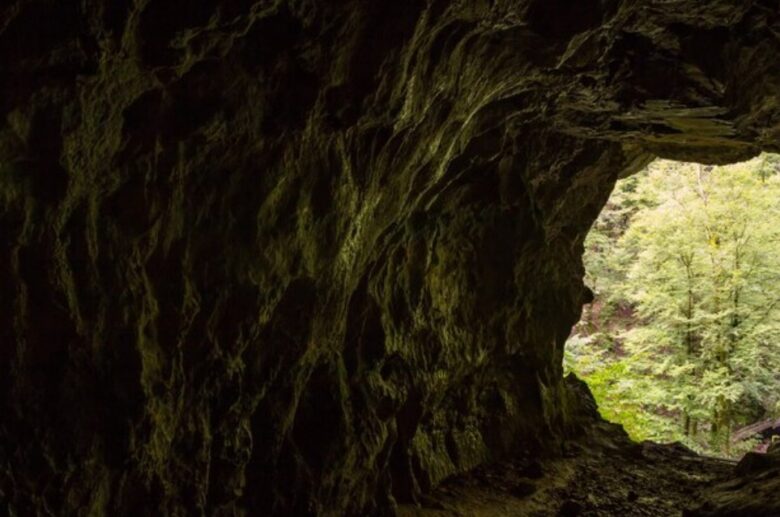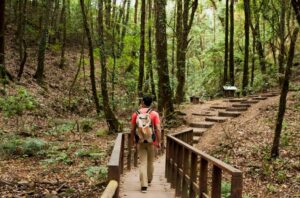Contents
Welcome to Trinidad, an enchanting Caribbean island where the rhythm of calypso music mingles with the whispers of the wind through lush rainforests. This gem of diversity, known for its rich cultural tapestry and vibrant festivals, also harbors a lesser-known, yet equally captivating aspect of its natural beauty – its mysterious and alluring caves.
In Trinidad, each cave tells a story, carved through centuries, offering a unique allure that captivates the hearts of adventurers and nature lovers alike. From the echoing chambers that reverberate with the history of the island to the shadowy realms that house exotic wildlife and intricate rock formations, these underground wonders present a different side of Trinidad – serene, majestic, and untouched.
As we embark on this underground adventure, we invite you to discover the hidden treasures of Trinidad’s caves. These natural sanctuaries, nestled beneath the island’s vibrant surface, are not just geological formations; they are portals to a world unexplored, echoing the untold stories of time. Join us as we unveil the secrets of these cavernous wonders and immerse ourselves in an experience that transcends the ordinary.
In this journey, we will explore the depths of Trinidad’s caves, each a unique testament to nature’s artistry. Prepare to be enchanted by the mystique of these subterranean landscapes, where every stalactite and stalagmite has a tale to tell, and every shadowy corner holds the promise of a new discovery.
Trinidad’s Geological Richness
The island of Trinidad, a vibrant jewel in the Caribbean, is not only rich in cultural heritage but also in geological wonders. Its land tells a story millions of years old, shaped by the forces of nature and time. Understanding the geological formation of Trinidad provides insight into the fascinating creation of its numerous caves, which are as much a part of its natural heritage as its renowned beaches and forests.
Formation of Trinidad
Trinidad’s geological story begins with its placement at the juncture of the Caribbean and South American tectonic plates. This unique positioning has subjected the island to a variety of geological processes, including volcanic activity, seismic events, and the gradual movement of the Earth’s crust.
The island’s surface is predominantly made up of sedimentary rocks, such as limestone, which plays a crucial role in cave formation. These rocks were formed from the remains of ancient marine organisms and coral reefs, solidified over eons under the immense pressure of overlying sediments. The presence of limestone is particularly significant as it is the primary rock type in which most of the world’s caves, including those in Trinidad, are formed.
Cave Formation in Trinidad
The caves of Trinidad are primarily the result of a natural process called karstification, where the slightly acidic rainwater, often mixed with organic acids from the soil, percolates through the ground, slowly dissolving the limestone. Over thousands to millions of years, this erosion carves out cavities and tunnels, eventually forming the caverns we see today.
Trinidad’s caves vary in size and shape, reflecting the diversity of the island’s geological processes. Some caves were formed by the underground rivers carving their way through the limestone, while others resulted from the collapse of cavern roofs, creating sinkholes and grottos. These natural processes have sculpted a subterranean world of majestic chambers, narrow tunnels, and intricate stalactites and stalagmites.
The history of these caves is intertwined with the island’s ecological and human history. They have been home to native wildlife, provided shelter to the island’s earliest inhabitants, and even played roles in local folklore and mythology.
In conclusion, the geological richness of Trinidad is not just a tale of rocks and erosion, but a narrative of a land that has evolved over millennia. The caves of Trinidad are a testament to this ongoing story, offering a glimpse into the island’s past and a unique adventure for those who dare to explore them.
Exploring Trinidad’s Most Famous Caves
Trinidad, a land of vibrant culture and diverse landscapes, is also home to some of the most intriguing cave systems in the Caribbean. Each cave offers a unique journey into the heart of the island’s geological and ecological heritage. Let’s explore some of Trinidad’s most famous caves and uncover the marvels they hold.
- Gasparee Caves
- Located on Gaspar Grande Island, these caves are known for their stunning blue grotto.
- The main attraction is the Crystal Pool, a clear underground lake that shimmers with a surreal blue light, a result of sunlight filtering through a natural hole in the cave’s roof.
- Stalactites and stalagmites adorn the cave’s interior, creating an otherworldly landscape. The caves are also home to various bat species, adding to their ecological significance.
- Cuevas del Tamana
- Tamana Caves are a must-visit for adventure enthusiasts and nature lovers.
- Known for being the largest cave system in Trinidad, these caves house thousands of bats, offering a spectacular view during their evening exodus.
- Inside, you’ll find a series of chambers and tunnels, with unique rock formations and a diversity of cave-dwelling creatures.
- Aripo Caves
- Situated in the Aripo Valley, these caves are part of Trinidad’s lush rainforest region.
- The caves are renowned for their impressive limestone formations and the rare oilbirds, or ‘guacharos’, which reside in the darker recesses.
- The journey to these caves is as thrilling as the destination itself, involving a hike through the scenic rainforest, showcasing Trinidad’s rich biodiversity.
- Dunston Cave
- Located in the Asa Wright Nature Centre, Dunston Cave is particularly famous for its oilbird population.
- These nocturnal birds, with their unique echolocation abilities, are one of the few species of birds in the world that live in caves.
- The cave’s relatively easy accessibility makes it an excellent choice for those interested in both bird watching and exploring cave ecosystems.
- Cumaca Cave
- A hidden gem deep in the forests of Trinidad, known for its pristine natural beauty.
- The cave is home to a variety of wildlife, including different bat species and unique insects.
- The interior of the cave features striking limestone formations, with streams of light creating a magical atmosphere.
Each of these caves not only offers a glimpse into Trinidad’s underground beauty but also tells a story of the island’s natural history and evolution. They serve as sanctuaries for a range of wildlife and provide a unique adventure for those who visit, making them a crucial part of Trinidad’s natural heritage.
The Adventure Aspect
Trinidad’s caves offer more than just a journey through time and nature; they provide an exhilarating adventure for those seeking a thrill beyond the ordinary. Exploring these underground realms is a unique experience, blending the excitement of discovery with the awe of witnessing nature’s artistry up close. Let’s delve into what makes cave exploration in Trinidad a must-try adventure and provide some essential tips for a safe and responsible journey.
Experiencing Cave Exploration
- The Thrill of Discovery: Venturing into Trinidad’s caves, you are stepping into a world unseen by many. The thrill of navigating through dark, mysterious passages, and uncovering hidden chambers is an experience that stays with you long after the adventure ends.
- Connecting with Nature: Cave exploration offers a unique way to connect with nature. It’s not just about the physical journey; it’s about feeling the quiet power of the earth around you, hearing the drip of water that shapes these formations, and witnessing the delicate ecosystems thriving in these hidden environments.
- Photographic Opportunities: For photography enthusiasts, caves present a unique challenge and opportunity. Capturing the interplay of light and shadow, the intricate details of rock formations, and the occasional glimpse of wildlife, makes for stunning and memorable photographs.
Tips for Safe and Responsible Cave Exploration
- Preparation is Key: Always research the cave you plan to visit. Understand the terrain and difficulty level to ensure it matches your experience and fitness level.
- Safety Gear: Essential gear includes a sturdy helmet, reliable flashlight or headlamp, appropriate footwear, and gloves. Always carry extra batteries and a first-aid kit.
- Respect Nature: Remember that caves are delicate ecosystems. Avoid touching formations like stalactites and stalagmites, as oils from human skin can hinder their growth.
- Stay on Designated Paths: To protect both the cave environment and yourself, stick to marked paths and trails. Venturing off-trail can be dangerous and cause irreversible damage to the cave.
- Guided Tours: Especially for beginners, joining a guided tour can enhance the experience. Guides are knowledgeable about the cave’s history, features, and safety protocols.
- Leave No Trace: Carry out everything you bring in. Preserve the pristine nature of these caves for future explorers.
- Emergency Plan: Always inform someone about your cave exploration plans, including your expected return time. Having a plan in case of emergencies is crucial.
Exploring the caves of Trinidad is an adventure that combines the excitement of exploration with the wonder of natural history. By following these tips, you can ensure a safe and enjoyable experience while respecting and preserving these natural treasures for generations to come.
Conservation Efforts and Ecological Significance
The caves of Trinidad are not just geological wonders; they are vital ecosystems that play a significant role in the island’s biodiversity and environmental health. Understanding the ecological importance of these caves and the conservation efforts underway to protect them is crucial for both visitors and locals alike.
Ecological Importance of the Caves
- Biodiversity Hotspots: Trinidad’s caves are home to a variety of species, some of which are unique to these environments. They provide critical habitats for bats, which are essential for pollination and seed dispersal, and for other species like cave crickets, blind cave fish, and unique microorganisms.
- Natural Water Systems: Many caves are integral parts of the island’s natural water systems. They act as reservoirs and channels for underground water, playing a key role in the local water cycle and impacting the wider ecosystem.
- Geological and Climatic Indicators: Caves are natural archives that store climatic and geological information. Studying cave formations like stalagmites can provide valuable insights into historical climate patterns and geological events.
Conservation Efforts
- Protection of Cave Habitats: There are ongoing efforts to protect and preserve the delicate ecosystems within Trinidad’s caves. This includes regulating access to certain areas, conducting scientific research to understand the caves’ ecosystems better, and implementing measures to prevent pollution and habitat destruction.
- Educational Programs: Raising awareness about the importance of cave conservation is vital. Educational programs aimed at both locals and tourists help in understanding the need to protect these natural treasures. This includes workshops, guided tours, and informative signage.
- Community Involvement: Involving local communities in conservation efforts ensures sustainable protection of the caves. This includes training locals as tour guides, engaging in community-led monitoring and preservation activities, and promoting eco-friendly tourism practices.
How Visitors Can Contribute
- Follow Guidelines: Visitors can play a significant role in conservation by adhering to guidelines set by authorities. This includes not disturbing the wildlife, sticking to designated paths, and not leaving any waste behind.
- Support Conservation Initiatives: Engaging with and supporting local conservation initiatives, whether through donations, volunteering, or participating in educational tours, can have a positive impact.
- Spread Awareness: Sharing your experiences and the knowledge gained about the importance of these caves can help in spreading awareness about their conservation.
Understanding and respecting the ecological significance of Trinidad’s caves is essential. As visitors explore these captivating underground landscapes, it’s important to remember that our actions can help preserve these wonders for future generations to enjoy.
Local Myths and Legends
Trinidad, an island steeped in a rich tapestry of cultures, holds many tales and myths that add a mystical dimension to its natural landscapes, especially its caves. These stories, passed down through generations, are not just mere tales but are deeply intertwined with the island’s cultural and historical identity. Let’s explore some of the intriguing folklore associated with Trinidad’s caves.
Gasparee Caves and the Ghost of the Blue Grotto
- One of the most famous legends is that of the Blue Grotto in Gasparee Caves. It is said that the ghost of a Spanish pirate haunts these caverns, guarding his hidden treasure. The shimmering blue waters of the Crystal Pool are often linked to this legend, giving a mystical aura to the cave.
The Caves of Tamana and the Sleeping Giant
- The Tamana Caves are not just known for their ecological significance but also for the legend of the Sleeping Giant. According to local lore, these caves are part of a giant who, after a battle with an enemy, lay down to rest and turned into the mountain range. The caves are believed to be parts of his body, adding a sense of awe to their exploration.
Aripo Caves and the Mother of the Waters
- In the lore surrounding Aripo Caves, there is the tale of the ‘Mother of the Waters,’ a spirit believed to inhabit the underground streams and pools. She is revered as a protector of the water sources and wildlife within the caves, symbolizing the interconnectedness of nature and spiritual beliefs.
Dunston Cave and the Legend of the Oilbirds
- Dunston Cave is famous for its oilbirds, or ‘guacharos.’ Local myths suggest these birds are guardians of the cave, guiding the souls of the departed to the afterlife. The eerie sounds they make and their nocturnal nature contribute to the mystique surrounding this legend.
Cumaca Cave and the Enchanted Realm
- The Cumaca Cave is often associated with tales of an enchanted realm. Legend has it that the cave is a gateway to a world of mythical creatures and lost civilizations, capturing the imagination of both locals and visitors.
These myths and legends, rooted in Trinidad’s diverse cultural heritage, not only add a layer of mystery to the caves but also reflect the islanders’ respect and awe for the natural world. They serve as a reminder of how nature and culture are deeply entwined, with each cave’s story being a piece of the larger tapestry of Trinidad’s rich folklore.
Practical Information for Visitors
Exploring the caves of Trinidad is a thrilling adventure, but it’s important to plan your visit carefully. Here’s some practical information to help you make the most of your caving experience on the island.
Location and Access
- Gasparee Caves: Located on Gaspar Grande Island, accessible by a short boat ride from Chaguaramas.
- Tamana Caves: Situated in the Central Range of Trinidad, reachable by a drive and then a hike into the forest.
- Aripo Caves: Located in the Aripo Valley, accessible via a guided hike through the rainforest.
- Dunston Cave: Found within the Asa Wright Nature Centre, accessible through the centre’s guided tours.
- Cumaca Cave: Hidden deep in the forests of Trinidad, best visited with a local guide who knows the area.
Best Time to Visit
- The best time to visit these caves is during the dry season, from January to May. This period typically offers better conditions for cave exploration, with lower risk of flooding in cave systems.
Required Gear
- Essential gear includes a helmet, a reliable flashlight or headlamp, sturdy footwear (preferably hiking boots), and gloves for grip. Always carry water and snacks, and consider a change of clothes for after the exploration.
Guided Tours and Entry Fees
- Gasparee Caves: Guided tours are available and recommended. Contact tour operators in Chaguaramas for prices and schedules.
- Tamana Caves: Guided tours are advisable to navigate the extensive cave system safely. Check with local adventure tour companies for details.
- Aripo Caves: Access is typically part of a guided tour, especially due to the challenging terrain. Enquire at local eco-tourism providers.
- Dunston Cave: Tours are organized by the Asa Wright Nature Centre, with entry fees contributing to conservation efforts.
- Cumaca Cave: As it’s less commercial, it’s best explored with a local guide. Arrangements can often be made through eco-tourism groups.
Safety and Conservation
- Always follow your guide’s instructions and stick to marked paths to ensure your safety and to protect the cave ecosystems. Be mindful of the impact of your visit and adhere to the principles of ‘leave no trace’ to preserve these natural wonders.
Local Contacts and Resources
- It’s advisable to check with the Trinidad and Tobago Tourism Office or local eco-tourism websites for the latest information on cave tours, safety guidelines, and conservation practices.
Planning your cave adventure with these practical considerations in mind will ensure a safe, enjoyable, and respectful exploration of Trinidad’s remarkable underground landscapes.
Photography and Visuals
The caves of Trinidad, with their mesmerizing formations and interplays of light and shadow, present a paradise for photographers. Capturing the underground beauty of these natural wonders can be an incredibly rewarding experience. However, it’s important to approach cave photography with respect for the environment and an understanding of the unique challenges it presents.
Capturing the Beauty of the Caves
- Play with Light: The unique lighting in caves can create dramatic and captivating images. Use the natural light filtering in from entrances or cracks, or experiment with artificial light sources like flashlights or headlamps to highlight textures and formations.
- Focus on Details: Caves offer a variety of photographic subjects, from grand chambers to intricate details of rock formations. Close-up shots of stalactites, stalagmites, and other mineral deposits can reveal patterns and textures not immediately apparent to the naked eye.
- Capture the Scale: Including a person or an object for scale can help convey the grandeur and depth of the cave’s interior. This not only adds perspective but also enhances the viewer’s connection to the image.
Best Practices for Cave Photography
- Minimize Disturbance: Always be mindful of your surroundings. Avoid touching delicate formations, and be cautious of where you step to prevent damaging the cave’s natural features.
- Use Tripods Carefully: If tripods are allowed, use them responsibly. Place them on sturdy ground to avoid disturbing the cave floor or any formations.
- Respect Wildlife: If the cave is home to wildlife, like bats or birds, be respectful. Avoid using flash photography which can disorient or disturb these creatures.
- Leave No Trace: Pack out all equipment and waste. Be conscious not to leave any trace of your visit, preserving the cave’s pristine condition.
Ethical Considerations
- Permission and Guidelines: Always check if photography is permitted in the cave. Some areas may be restricted to protect sensitive ecosystems or cultural heritage sites.
- Share Responsibly: When sharing your photographs, consider including information about the importance of cave conservation and the need to respect these natural habitats.
Photography in caves is not just about capturing stunning images; it’s about documenting and sharing the beauty of these hidden worlds in a way that fosters appreciation and respect for their natural and ecological significance. By adhering to these practices, photographers can help ensure that these subterranean treasures remain unspoiled for future generations to explore and enjoy.
Conclusion
As we conclude our journey through the underground marvels of Trinidad, it becomes evident that these caves are not just natural formations; they are gateways to a world of wonder, history, and adventure. Each cave, with its unique features and stories, offers a glimpse into a hidden part of Trinidad that many never get to see. From the awe-inspiring stalactites and stalagmites of the Gasparee Caves to the mysterious depths of the Tamana Caves, every visit promises a new and exciting experience.
Exploring these caves is an opportunity to connect with nature in its most pristine form, to witness the beauty of geological history, and to embrace the thrill of adventure. It’s an invitation to step out of the ordinary and into the extraordinary, to discover the secrets that lie beneath the surface of this vibrant island.
As we encourage you to embark on this remarkable adventure, we also remind you of the importance of exploring responsibly. The preservation of these natural wonders is in our hands. By respecting the caves, their ecosystems, and their cultural significance, we ensure that they continue to be sources of awe and inspiration for generations to come.
Trinidad’s caves are waiting to reveal their secrets to those who seek them. So, pack your gear, charge your cameras, and prepare for an adventure like no other. Visit Trinidad’s caves not just as a tourist, but as an explorer, a learner, and a guardian of nature’s treasures. Let the adventure begin!




